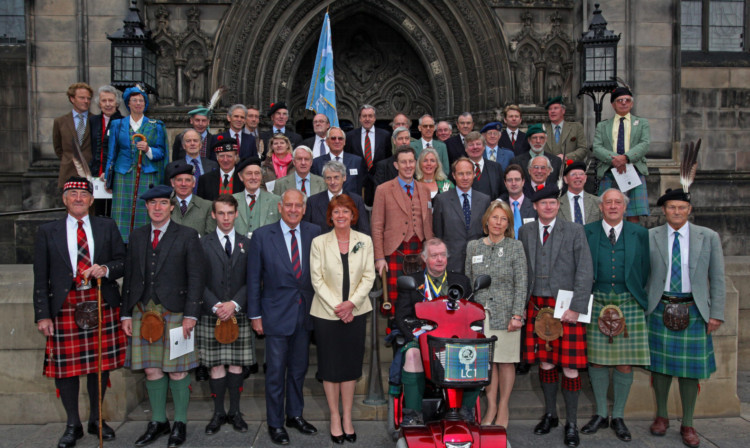A historic gathering of more than 40 clan leaders took place in St Giles’ Cathedral in Edinburgh to commemorate the Battle of Flodden, the first time such numbers have been brought together. Clan chief Sir Malcolm MacGregor of MacGregor and convener of the Standing Council of Scottish Chiefs told Caroline Lindsay why it’s so important to preserve the history of the clans.
According to records, the MacGregor clan originated in Argyll and west Perthshire around 1390, although Sir Malcolm, the 24th chief, is sure they existed before that. “We claim descent from the ancient kings of Scotland who came over from Ireland,” he says.
There are around 150 clans worldwide, with 110 in the UK and 80 or so in Scotland, but Monday’s gathering in St Giles’ Cathedral of more than 40 clans was a rare event.
Sir Malcolm explains: “Historically, meetings between the clans have always been uncommon. We are chiefs of our own clans, and clan history is very much a regional fact of Scotland’s past. For example, if the MacGregors fought the Campbells or Colquhouns over power and territory, then the battles would take place in Argyll. There are very few events in Scottish history where clans fought together.
“The old adage ‘You can never unite the clans’ was true. But Flodden was an exception. In the Flodden army under James IV, 60 clan chiefs were killed, including the king himself and his son. In addition, whole towns and villages turned out for the king and were killed.
“The 500th anniversary of the battle was the catalyst for us all to get together and we linked it to the modern day by raising £25,000 for charities Combat Stress and Erskine. The service was very emotive most people there were descendants of those who fought at Flodden. Despite horrific casualties, the clan system survived. It was particularly moving when the Blue Blanket Edinburgh’s fighting banner which represented the tradesmen, craftsmen and people of the city who died for the king was brought in and unfurled.”
The history of Clan Gregor whose members include the infamous Rob Roy MacGregor who was so vividly brought to life for the Victorians and future generations by Sir Walter Scott is colourful to say the least. Outlawed in 1603, members of the family had been forced to flee to the hills. Their menfolk were hunted down with bloodhounds and their women branded on the face with hot irons.
The clans, explains Sir Malcolm, are a key part of Scottish history. “They were very unique and distinct, and involved some amazing characters. The 1745 uprising saw the end of the clan system and if we don’t continue to acknowledge the good, the bad and the ugly, our history could slip away and we would be left with a kind of ersatz history without any sense of authenticity.”
While part of the 21st century clan chief’s job is to make sure that historians accurately record the history of the clans for posterity, they also play an important role in keeping the clans alive in other ways.
Sir Malcolm explains: “We co-ordinate trips worldwide, especially to the US, Canada and New Zealand, promote heritage projects in the regions, help to give a sense of direction to those clans without chiefs, and work with the Scottish Government with the Highland Clans Partnership. Today’s clans are a very different beast entirely because of the overseas dimension, in America particularly they can’t get enough of it,” he adds.
“The Flodden service proved that, as a council, we could bring chiefs, their families and relations, together for a common purpose but that purpose has to be significant and have a sufficiently important and interesting profile,” he said.
The 700th anniversary of Bannockburn will be commemorated in June next year and Sir Malcolm is hopeful that many of the clan chiefs will once again get together to mark this historic occasion. “It will be an all-year festival with a clan element,” he says.
